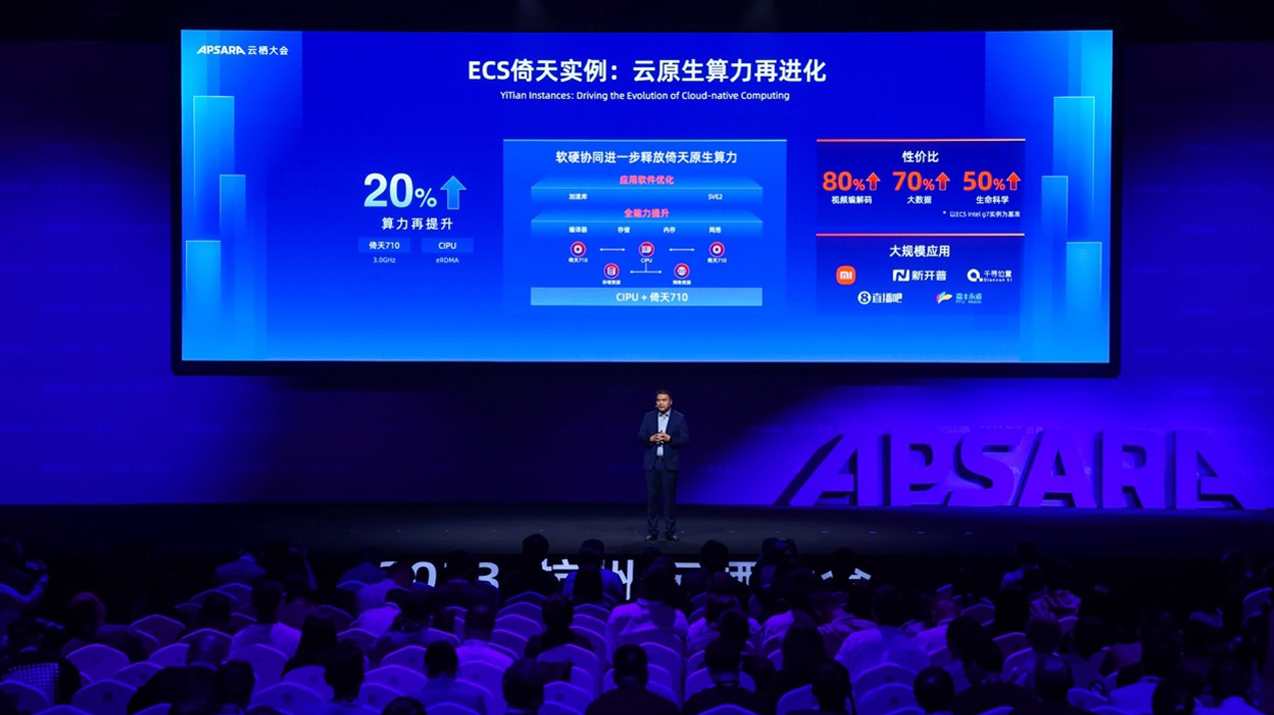










【平头哥半导体有限公司】(以下称“我们”或“平头哥”) 尊重并保护用户信息, 并且将以高度勤勉和审慎的义务对待这些信息。在您使用平头哥官方网站(以下称“网站”) 时, 您同意我们将按照本协议收集、处理及披露您的信息。
您浏览本网站并获取本网站上的任何技术资料前务必仔细阅读本隐私协议并同意隐私协议下的所有条款。本隐私协议在您选择同意后立即生效, 并对您产生约束力。
I. 适用范围
1.1. 本隐私权政策适用于网站所有功能和服务。功能和服务包括向您提供页面浏览、技术资料的获取和下载等功能和服务, 以及通过网站向您提供的其他功能和服务。
II.用户信息的收集和使用
2.1. 帮助您获取网站上的技术资料
当您在网站上获取并下载技术资料前, 您同意向我们提供您的姓名、你所任职或服务的公司的名称、您在该公司的职务、您的手机和邮箱等联系方式, 除您直接向我们提供和披露的信息以外, 我们不会主动收集您的个人信息。您提交的电子邮箱将用于您登录时接受验证码, 并且作为您与我们指定的联系方式之一, 用来接受相关业务通知(如活动推广、服务变更等) , 并且我们或我们的关联方可通过此联系方式向您进行营销推广、宣传产品、发送业务通知或与您进行业务沟通。如果您不想接受该等营销推广、宣传产品、发送业务通知或与业务沟通的, 您可以通过第【8.6】款所列明的方式与我们进行联系。
2.2. 您同意我们可出于如下目的, 使用您提交的信息:
2.3.1. 在法律法规允许的前提下, 向您推广、介绍相关产品或活动;
2.3.2 帮助我们改善网站的功能和服务;
2.3.3. 经您许可的其他用途。
三、用户信息的共享、转让和公开披露
3.1. 共享
您同意我们在以下情形下可与其他组织和个人共享您的用户信息:
3.1.1. 在获取明确同意的情况下共享: 获得您的明确同意后, 我们会与其他方共享您的用户信息;
3.1.2. 在法定情形下的共享: 我们可能会根据法律法规规定、诉讼、仲裁解决需要, 或按行政、司法机关依法提出的要求, 对外共享您的用户信息;
3.1.3. 与关联方共享: 我们可能委托我们的关联方来提供服务, 因此我们可能会与我们的关联方共享您的某些用户信息, 以提供更好的客户服务和优化用户体验。我们仅会出于合法、正当、必要、特定、明确的目的共享您的用户信息, 并且只会共享提供服务所必要的用户信息。
3.2. 转让
您同意我们在以下情形下可将您的用户信息转让给任何公司、组织和个人:
3.2.1. 在获取明确同意的情况下转让: 获得您的明确同意后, 我们会向其他方转让您的用户信息;
3.2.2. 在我们与其他法律主体者发生合并、收购或破产清算情形, 或其他涉及合并、收购或破产清算情形时, 如涉及到用户信息转让, 我们会要求新的持有您用户信息的公司、组织继续受本协议的约束, 否则我们将要求该公司、组织和个人重新向您征求授权同意。
3.3. 公开披露
您同意我们在以下情形下可以公开披露您的用户信息:
3.3.1.获得您明确同意或基于您的主动选择, 我们可能会公开披露您的用户信息;
3.3.2. 或为保护网站及其关联方用户或公众的人身财产安全免遭侵害, 我们可能依据适用的法律或网站相关协议、规则披露关于您的用户信息。
3.4. 共享、转让、公开披露用户信息时事先征得授权同意的例外
您确认并知晓, 在以下情形中, 共享、转让、公开披露您的用户信息无需事先征得您的授权同意:
3.4.1. 与国家安全、国防安全有关的;
3.4.2. 与公共安全、公共卫生、重大公共利益有关的;
3.4.3. 与犯罪侦查、起诉、审判和判决执行等有关的;
3.4.4. 出于维护您或其他个人的生命、财产等重大合法权益但又很难得到本人同意的;
3.4.5. 您自行向社会公众公开的个人信息;
3.4.6.从合法公开披露的信息中收集个人信息的, 如合法的新闻报道、政府信息公开等渠道。
IV. 用户信息的安全
4.1. 我们非常重视您的信息安全。我们努力采取各种合理的物理、电子和管理方面的安全措施来保护您的用户信息。防止用户信息遭到未经授权访问、公开披露、使用、修改、损坏或丢失。我们会使用加密技术提高用户信息的安全性; 我们会使用受信赖的保护机制防止用户信息遭到恶意攻击; 我们会部署访问控制机制, 尽力确保只有授权人员才可访问用户信息; 以及我们会举办安全和隐私保护培训课程, 加强员工对于保护用户信息重要性的认识。
4.2. 我们会采取合理可行的措施, 尽力避免收集无关的用户信息。我们只会在达成本协议所述目的所需的期限内保留您的用户信息, 除非需要延长保留期或受到法律的允许。超出上述用户信息保存期限后, 我们会对您的个人信息进行删除或匿名化处理。
4.3. , 我们将尽力保障您发送给我们的任何信息的安全性。如果我们的物理、技术或管理防护设施遭到破坏, 导致信息被非授权访问、公开披露、篡改或毁坏, 导致您的合法权益受损, 我们将承担相应的法律责任。
4.4. 在不幸发生用户信息安全事件(泄露、丢失等) 后, 我们将按照法律法规的要求, 及时向您告知: 安全事件的基本情况和可能的影响、我们已采取或将要采取的处置措施、您可自主防范和降低风险的建议、对您的补救措施等。我们将及时将事件相关情况以邮件、信函、电话、推送通知等方式告知您, 难以逐一告知用户信息主体时, 我们会采取合理、有效的方式发布公告。
4.5. 同时, 我们还将按照监管部门要求, 上报用户信息安全事件的处置情况。
4.6. 我们将收集到的您的用户信息存放在中华人民共和国境内, 如在符合适用法律规定的情形下因业务需要向境外传输个人信息的, 我们会事先征得您的同意, 并向您告知用户信息出境的目的、接收方、安全保障措施、安全风险等情况。
4.7. 如我们的网站出现停止运营的情形, 我们会采取合理措施保护您用户信息安全, 包括及时停止继续收集用户信息的活动; 停止运营的通知将以逐一送达或公告的形式通知用户; 并对所持有的个人信息进行删除或匿名化处理等。
4.8. 如超出收集用户信息时所声称的目的或超出具有直接或合理关联的范围后使用用户信息前, 我们会再次向您告知并征得您的明示同意。
V. 用户信息的管理
5.1查询、更正和补充您的信息
您有权查询、更正或补充您的信息。为此, 您可以通过以下第【8.6】款列明的方式向我们发送书面要求对您的信息进行查询、更正和补充。我们将在收到您的书面要求后立即对该等申请进行处理, 协助您查询、更正或补充该等信息。
5.2删除您的信息
在以下情形中, 您可以通过以下第【8.6】款列明的方式向我们发送书面要求删除您的部分信息:
1.如果我们处理个人信息的行为违反法律法规;
2.如果我们收集、使用您的个人信息, 却未征得您的明确同意;
3.如果我们处理个人信息的行为严重违反了与您的约定;
4.如果您不再使用我们的产品或服务, 或您主动注销了您在网站上的登录权限;
5.如果我们永久不再为您提供产品或服务。
若我们决定响应您的删除请求, 我们还将同时尽可能通知从我们处获得您的个人信息的主体, 并要求其及时删除(除非法律法规另有规定, 或这些主体已独立获得您的授权) 。
当我们协助您删除相关信息后, 因为适用的法律和安全技术, 我们可能无法立即从备份系统中删除相应的信息, 我们将安全地存储您的个人信息并将其与任何进一步处理隔离, 直到备份可以清除或实现匿名。
5.3改变您授权同意的范围
您可以通过以下第【8.6】款列明的方式向我们发送书面要求更改或撤回您的授权同意。我们将在收到您的书面要求后立即对该等申请进行处理, 协助您更改或撤回授权同意。
当您撤回同意后, 我们将不再处理相应的个人信息。但您撤回同意的决定, 不会影响此前基于您的授权而开展的个人信息处理。
5.4注销您的登录权限
您可以通过以下第【8.6】款列明的方式向我们发送书面要求注销您在网站上的登录权限。在您主动注销该登录权限之后, 您将无法继续在网站上下载相应的技术资料, 我们将根据适用法律的要求删除您的个人信息, 或使其匿名化处理。
5.5响应您的上述请求
为保障安全, 您可能需要提供书面请求, 或以其他方式证明您的身份。我们可能会先要求您验证自己的身份, 然后再处理您的请求。我们将在15天内做出答复。对于与您的身份不直接关联的信息、无端重复信息, 或者需要过多技术手段(例如, 需要开发新系统或从根本上改变现行惯例) 、给他人合法权益带来风险或者不切实际的请求, 我们可能会予以拒绝。
在以下情形中, 按照法律法规要求, 我们将无法响应您的请求:
1.与国家安全、国防安全有关的;
2.与公共安全、公共卫生、重大公共利益有关的;
3.与犯罪侦查、起诉、审判和执行判决等有关的;
4.有充分证据表明个人信息主体存在主观恶意或滥用权利的;
5.响应您的请求将导致您或其他个人、组织的合法权益受到严重损害的;
6.涉及商业秘密的。
VI.本协议的更新
6.1. 您同意我们有权对本协议进行不时更新。
6.2. 未经您明确同意, 我们不会限制您按照本协议所应享有的权利。我们会在专门页面上发布对本协议所做的任何修订。
6.3. 对于重大修订, 我们还会提供更为显著的通知(包括对于某些服务, 我们会通过网站公示的方式进行通知, 说明本协议的具体变更内容) 。
6.4. 本协议所指的重大变更包括但不限于:
6.4.1. 我们的服务模式发生重大变化。如处理用户信息的目的、处理的用户信息类型、用户信息的使用方式等;
6.4.2. 我们在控制权、组织架构等方面发生重大变化。如业务调整、破产并购等引起的所有者变更等;
6.4.3.用户信息共享、转让或公开披露的主要对象发生变化;
6.4.4. 您参与用户信息处理方面的权利及其行使方式发生重大变化;
6.4.5. 我们负责处理用户信息安全的责任部门、联络方式及投诉渠道发生变化时;
6.4.6. 用户信息安全影响评估报告表明存在高风险时。
VII.法律适用和争议解决
7.1 本协议的有效性、解释、执行及争议解决均适用中国法律。
7.2 因履行本协议产生的或与本协议有关的任何争议, 应由双方友好协商解决, 协商不成的, 任何一方有权将争议提交平头哥住所地有管辖权的人民法院通过诉讼解决。
VIII.其他
8.1本协议下“关联方”是指通过具有投票权的股权(股票) 或以任何其他方式, 直接或间接地, 控制本协议任何一方、受控于本协议任何一方或与本协议任何一方共同受其他方控制的任何人士、公司、企业(包括一方设立的控股公司) 、合伙、信托或其他实体。而在此“控制”一词的意思是: 直接或间接拥有该等实体百分之五十(50%) 以上投票权或通过协议或其它方式, 直接或间接地拥有权利(所有权、股权或投票权等权利) 去控制或影响一个公司或实体的经营、管理。
8.2您和您的关联方同意, 除非取得我们的事先书面同意, 您和您的关联方将不得在任何宣传、促销、新闻发布、网站、公告、客户名单、营销/推销材料、案例分析、广告或其他披露材料中或以任何方式提及我们或任何我们的关联方或公开使用我们(或我们任何关联方) 的名称、商标或标识。
8.3若一方未行使或迟延行使其在本协议项下的某项权利, 不构成该方对此项权利的放弃, 若该方已经行使或者部分行使某项权利, 并不妨碍其在将来再次行使此项权利。并且任何权利的部分行使不得排除任何其他权利的行使。
8.4本协议某一条款的无效或无强制执行力, 不影响本协议其他条款的效力和执行力, 且双方应尽其合理努力友好协商以达成有效可执行的条款, 该有效可执行的条款应尽可能反映无效或不可执行条款的法律和经济实质。
8.5未经另一方事先书面同意, 任何一方不得部分或全部转让本协议下的任何权利和义务。但是, 我们可通过向您发送通知的方式, 将其在本协议项下的所有权利和义务转让给我们的关联方。
8.6如您有任何疑问、意见、建议、申诉或投诉, 您可以通过以下方式与我们联系, 我们将在【15】日内回复您的请求:
T-Head_Communications@service.alibaba.com

请输入不少于1个有效字符进行搜索









